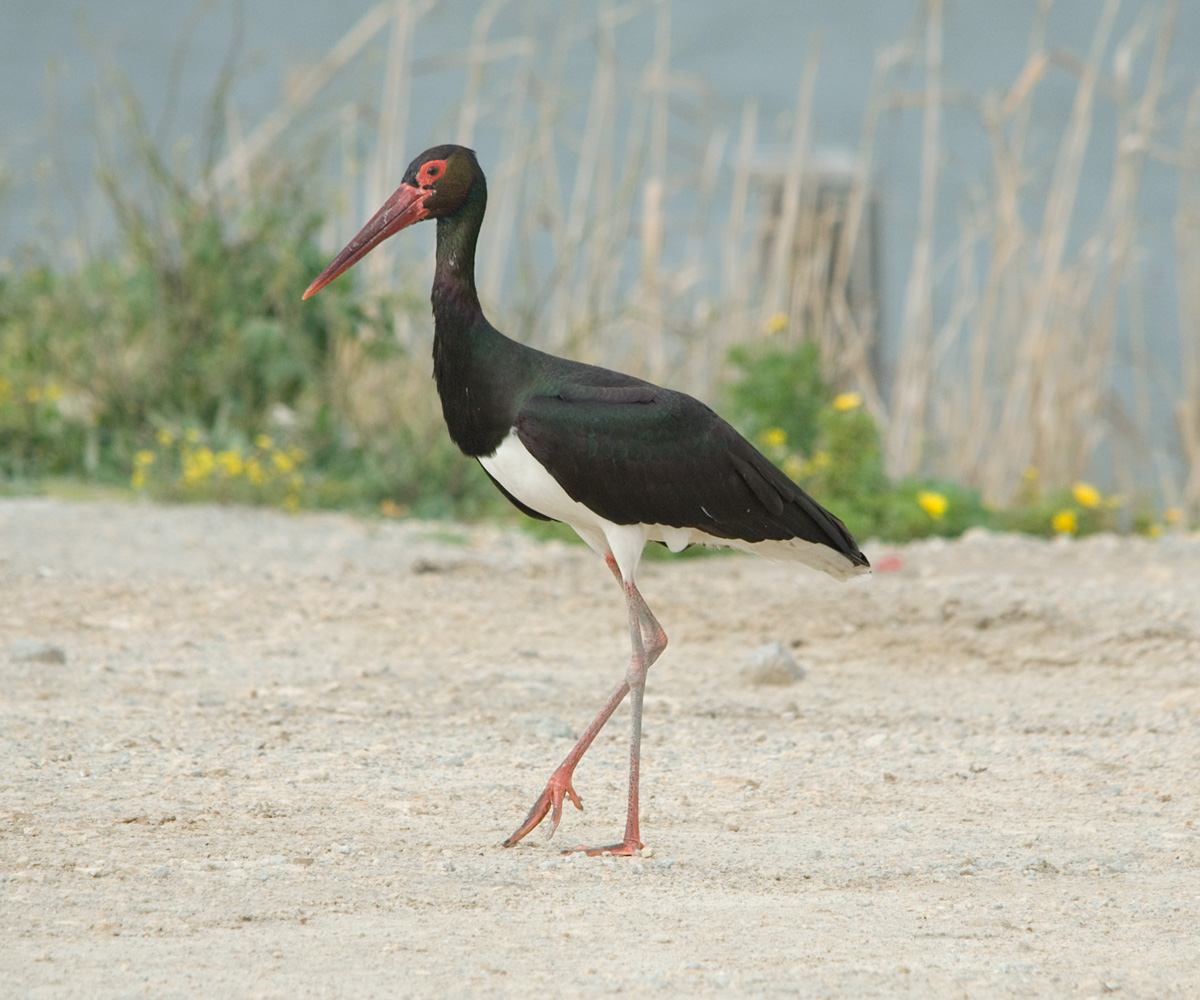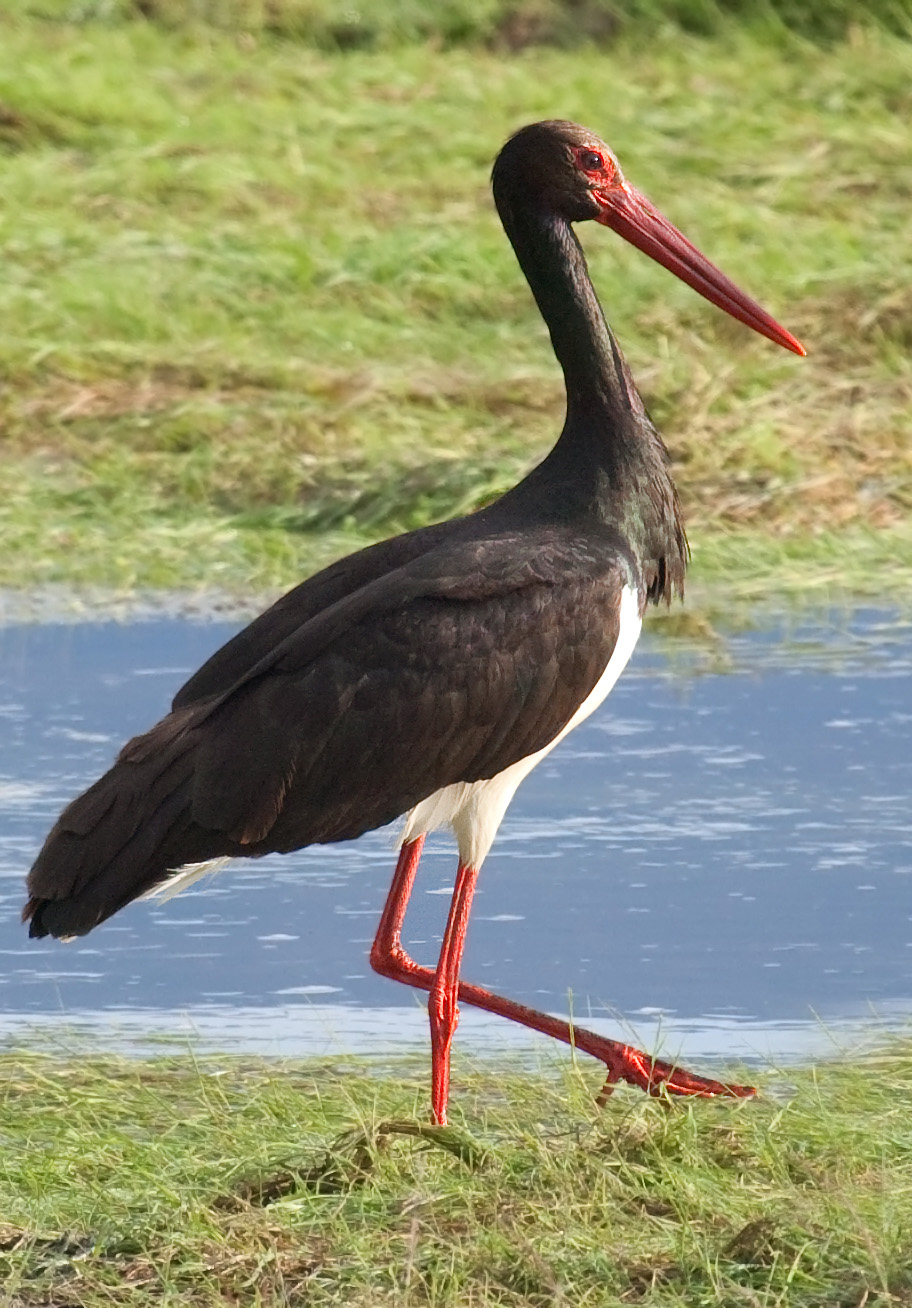
Ciconia nigra
SUBFAMILY
Tribe Ciconiini
TAXONOMY
Ardea nigra Linnaeus, 1758, Sweden. Monotypic.
OTHER COMMON NAMES
French: Cigogne noire; German: Schwarzstorch; Spanish:
Cigьeсa Negra.
PHYSICAL CHARACTERISTICS
Length 37–39 in (95–100 cm), wingspan 57–61 in (144–155
cm); 6.6 lb (3 kg). Glossy black except for white feathering on
belly. Red bill can appear slightly recurved.
DISTRIBUTION
Largest breeding range of any stork, nesting from eastern Europe
through central Asia. Winters in Africa and Asian tropics.
Separate resident population occurs in southern Africa.
HABITAT
Wooded areas with access to water.
BEHAVIOR
More solitary than some other storks. Agile flier, can fly
through the forest canopy. More vocal than other storks, communicates
with variety of hisses and whistles.
FEEDING ECOLOGY AND DIET
Fish and occasionally aquatic invertebrates. Locates prey visually,
grabbing food items with forward lunge of the head. Has been
observed shading water with outstretched wings while hunting.
REPRODUCTIVE BIOLOGY
Monogamous. Solitary nester in trees, the same nest often used
over many seasons. Sometimes “adopts” other bird nests, such
as those of black eagles and hammerheads. Clutch size three to
four eggs, incubation 32–38 days, fledging 63–71 days.
CONSERVATION STATUS
Declining locally from persecution and deforestation, especially
in Europe.
SIGNIFICANCE TO HUMANS
Heavily hunted, especially during migration through southern
Europe and Asia.
Other popular Animals
Photo Gallery of - Black stork




 Animalia Life
Animalia Life